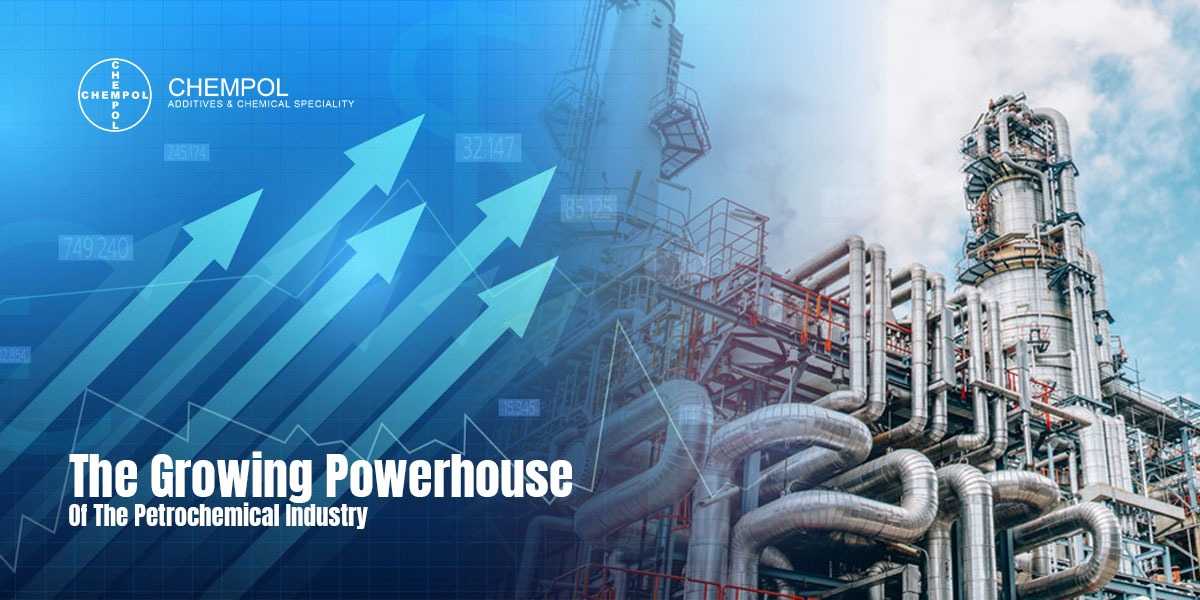
The Growing Powerhouse Of The Petrochemical Industry
Though a massive consumer of oil—about 12% of global demand—the petrochemical industry’s growth often gets overlooked in energy discussions. It’s the backbone of countless products: plastics, fertilizer, and the things that make modern life possible.
As part of its focus on overlooked energy sectors, the IEA the International Energy Agency recently delved into this topic. The conclusion? Petrochemicals play a huge role in the global energy picture that has impacted both resource use and sustainability goals. The report maps out where we’re headed, and how technology could offer alternative pathways that align with the UN’s Sustainable Development Goals.
“Petrochemicals form the foundation of our modern world, yet their massive impact on the global energy landscape often flies under the radar. This oversight needs to be addressed, especially as the sector’s influence on energy consumption is set to grow in the coming years.”
The world runs on petrochemicals, and demand is only accelerating. Plastics, the most visible product of this industry, have become absolutely essential. In the past two decades alone, plastic use has nearly doubled, outpacing even materials like steel and cement. This trend underscores the petrochemical sector’s growing importance in the global energy system.
Petrochemicals: The New Oil Titans
Get ready for a change of guard in the energy world. Demand for petrochemicals is booming, and the sector is on track to become THE top consumer of oil within the next few decades. By 2050, petrochemicals could account for half of all growth in oil demand and will surpass even industries like trucking and aviation. This isn’t just about oil, either.
The petrochemical industry is ready to gabble up the massive amount of natural gas that is equivalent to half of Canada’s entire current consumption by 2030. These figures and stats underscore the petrochemical industry’s growing dominance and the challenges it presents for the global energy landscape.
The Geography of Growth Where the Petrochemical Boom is Coming

There is a significant disparity between developed nations and developing countries in terms of the utilization of plastics and fertilizer products that are heavily dependent on petrochemicals at present. For example, the United States of America and Europe consume up to twenty times more plastic per person than their counterparts in nations such as India and Indonesia.
Because of this gap, the petrochemical industry has the opportunity to tap into a massive prospective market. The demand for the everyday commodities that are made possible by petrochemicals is poised to explode as the economies of developing countries continue to grow and as living standards continue to improve.
As a result of this upheaval, the global energy landscape will undergo a dramatic transformation in the years to come.
Petrochemicals Are Hidden in Plain Sight
From the food on your table to the clothes you wear, petrochemicals play a surprisingly large role in daily life. Here’s just a glimpse:
- Packaging That Protects: The plastic wrap keeping your food fresh? It likely started as petrochemicals like polyethylene.
- Feeding the World: Fertilizers, many derived from ammonia, are a vital tool for boosting crop yields around the globe.
- Getting Around: Tires for cars, bikes, and everything in between often rely on synthetic rubber, a product made from petrochemicals.
- Clean and Comfy: Laundry detergents and the fabrics of many clothes contain petrochemical-derived ingredients.
This is just the tip of the iceberg! Petrochemicals underpin countless products we rely on without a second thought.
The Rise of the Global South Drives Petrochemical Demand
While recycling and efforts to reduce single-use plastics gain momentum in some developed nations, this progress will be dwarfed by a massive surge in plastic use across the developing world. As these economies grow and populations become more affluent, demand for the convenience of petrochemical-based products will escalate sharply.
This poses a dilemma: while petrochemicals improve the quality of life for billions, the industry faces pressure to find sustainable solutions to handle the growing waste problem and explore alternatives for hard-to-replace products.
The Petrochemical Power Shift from Shale vs. the Middle East
The petrochemical sector on a worldwide scale is a battleground, and the power balance is shifting within the business. It has become a prominent player in the production of ethane-based products as a result of the shale gas boom that has occurred in the United States. Despite this, the Middle East continues to be a formidable force, as it has the lowest production prices for a significant number of important petrochemical goods.
The fight for market share will be extremely strong as a result of this conflict. Adapting to this changing landscape is absolutely necessary for countries that are largely dependent on petrochemical exports in order to guarantee that they maintain their position in the global energy system.
A-Pillar Of Modern Society With Clean Technology Scenario

The petrochemical industry is expected to have a more promising future as a result of the implementation of the Clean Technology Scenario (CTS). If the appropriate investments are made, we may be able to see a transformational change. The air pollution caused by the manufacturing of chemicals may decrease by 90 percent by the year 2050, while the communities that are located near these plants will benefit from cleaner air.
The CTS focuses on reducing emissions and promoting water conservation, which is essential in a sector with significant water requirements.
One of the changes that could potentially have the greatest impact is the commitment to addressing the challenge of plastic trash. We have the potential to reduce the amount of plastic pollution that enters our oceans by fifty percent if we make recycling and improved waste management systems our top priorities.
This scenario is not some far-off ideal; rather, it is a road map to a petrochemical sector that strikes a balance between meeting the requirements of modern society and being responsible for the environment.
To Combat Emissions, Recycling Alone Is Not Enough
The Clean Technology Scenario (CTS) underscores the fact that cleaning up the petrochemical industry will take a great deal more than simply changing our waste behaviors. This is despite the fact that efforts to reuse and recycle plastics are extremely important. It is imperative that the following be prioritized in order to reduce emissions effectively:
Capture Carbon
Carbon capture technologies capture carbon emissions at their point of origin, thereby preventing them from entering the atmosphere. This is of particular importance in the petrochemical industry, particularly for processes that result in the emission of significant quantities of carbon dioxide.
Alternating the Sources of Fuel:
The transition away from coal and toward natural gas, which reduces emissions, has been made. Because petrochemical factories demand enormous amounts of energy, this shift is absolutely necessary for their operation.
Efficiency
Efficiency refers to the process of maximizing output while minimizing energy consumption by streamlining industrial procedures as much as feasible. By optimizing each stage, from heating to chemical reactions, petrochemical products may reduce the amount of waste they produce and they can also reduce their overall energy footprint.
The CTS makes it abundantly evident that a multi-pronged approach is essential in order to achieve a more environmentally friendly future for the petrochemical industry.


